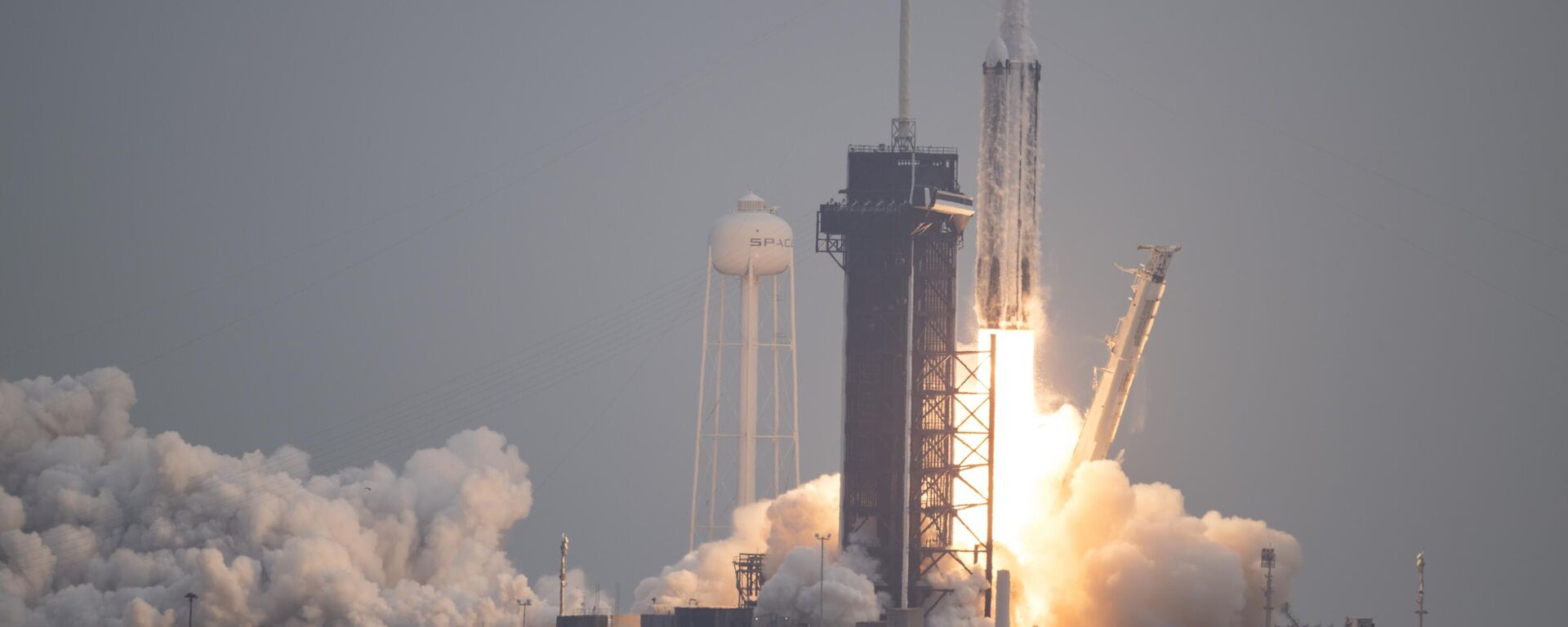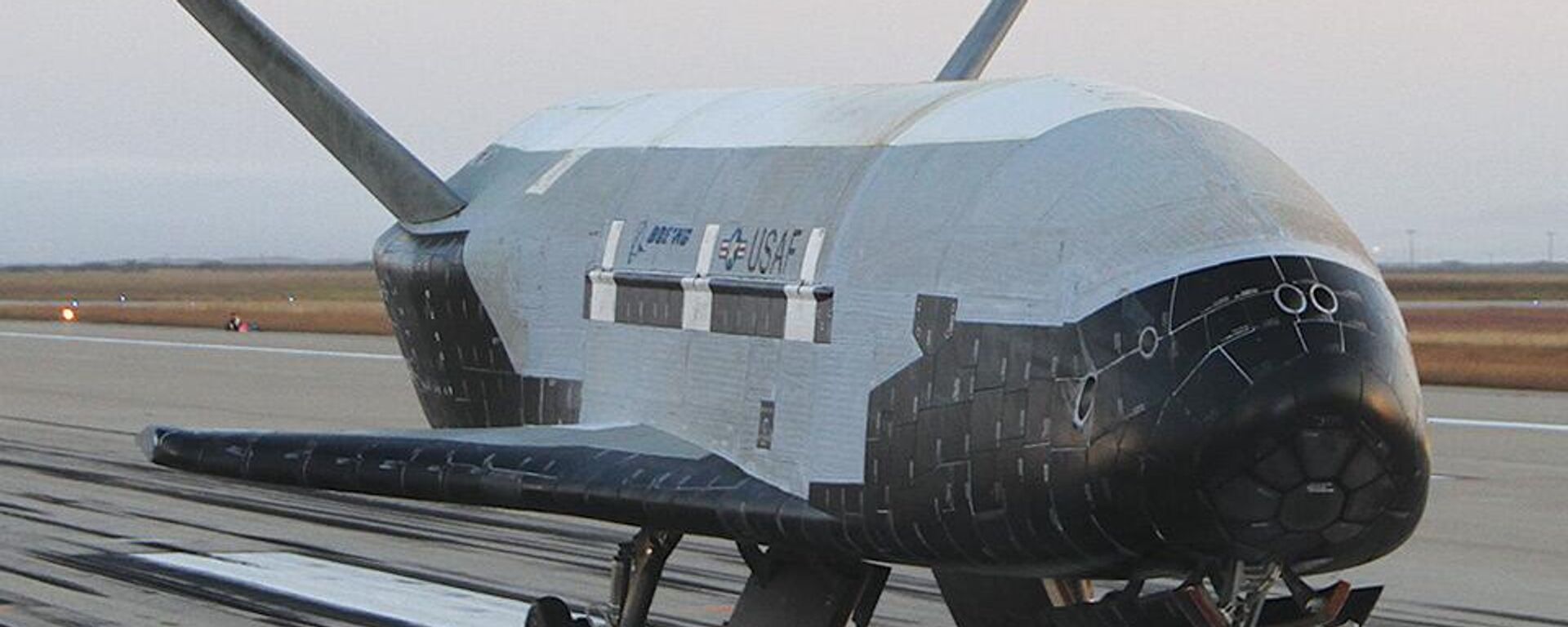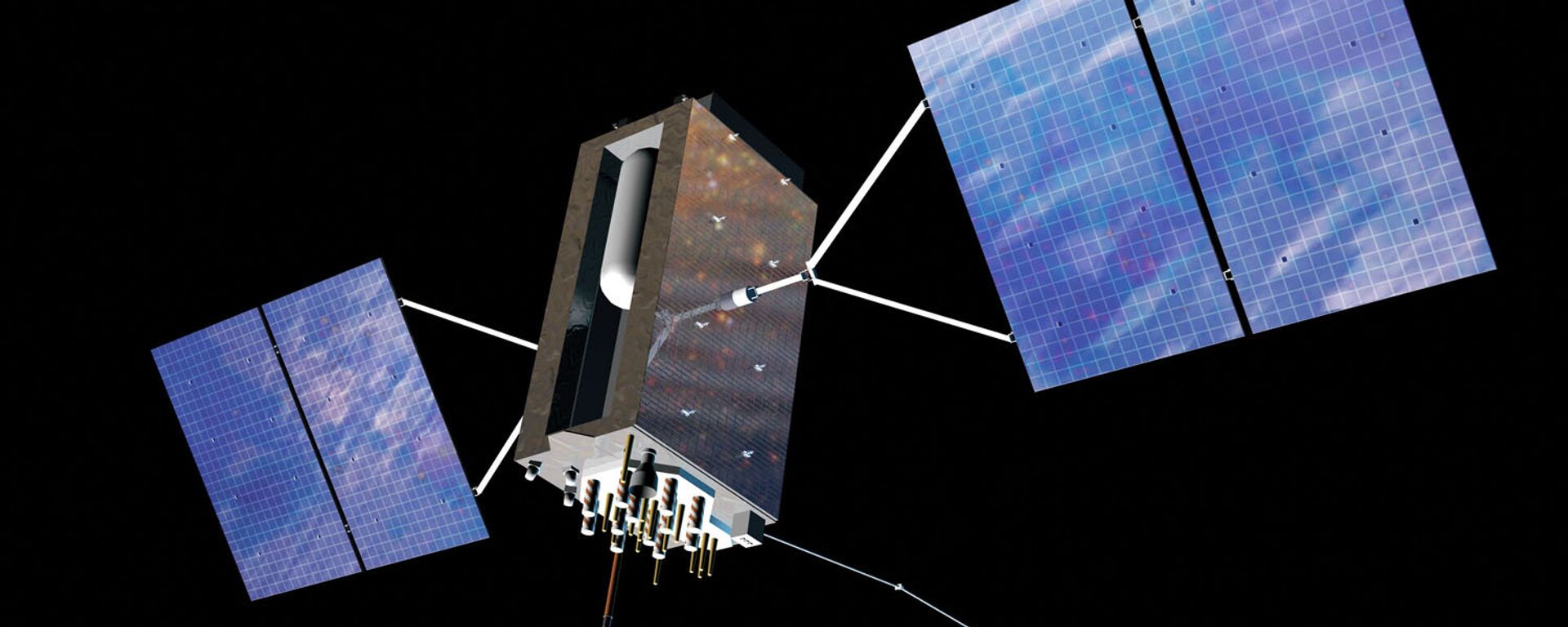What's the US' X-37B Spacecraft and What Military Purpose Does it Serve in Space?

© Photo : U.S. Air Force
Subscribe
For the first time, SpaceX’s Falcon Heavy rocket launched the US military's uncrewed and reusable X-37B spaceship on its new mission on December 28. What is the mysterious craft tasked with?
The American mainstream press has reported the US Space Force's X-37B launch with much fanfare, claiming that the spacecraft's seventh mission promises to be "even more intriguing" than its earlier trips.
The media boasts that SpaceX Falcon Heavy is one of the most powerful rockets in the world that can carry cargo into Earth's orbit, and beyond.
CNN remarked that it's unclear where exactly the spaceship is going, suggesting that the launch via the Falcon Heavy could indicate that X-37B is "destined for more distant orbits, perhaps even to the Moon or Mars."
"There is no official information about military purposes - everything is classified, nothing is reported," Ivan Moiseev, the head of the Russian Institute of Space Policy, told Sputnik.
"But an analysis of the device and its orbits allows us to suggest what its purpose is. This device carries several small supporting microsatellites. They provide video reconnaissance, communications, and navigation to the [US] military. If a conflict erupts somewhere – the spacecraft flies close to the equator, where there are a lot of hot spots – these devices are deployed in those orbits that are most convenient and quickly accessible to special groups located below, on Earth."
What is Its Orbital Test Vehicle?
The X-37 Orbital Test Vehicle (OTV) is manufactured by Boeing and operated by the United States Space Force. Typically, it is delivered to orbit to spend several months before returning to Earth.
The uncrewed and reusable space plane looks like a smaller version of NASA's famous shuttle. The X-37B is about 8.8 meters long; and 2.9 meters tall, while its wingspan is less than 4.6 meters. At launch, it weighs 4,990 kilograms. Its first mission started in 2010 with the spacecraft staying aloft for 224 days.
The spacecraft's seventh mission – initially scheduled to begin on December 7 – was announced on November 8. Per the US Space Force's official website, it has a wide range of test and experimentation objectives.
"X-37B Mission 7, also known as OTV-7, will expand the United States Space Force’s knowledge of the space environment by experimenting with future space domain awareness technologies. These tests are integral in ensuring safe, stable, and secure operations in space for all users of the domain," the US military said.
However, the Pentagon appears to have partially lifted the veil of secrecy on one of the mission's objectives, saying that the X-37B will expose plant seeds onboard to the critical radiation environment of long-duration spaceflight. The "Seeds-2" experiment is said to pave the way for future crewed space missions.
During a previous mission, the spacecraft carried the Naval Research Laboratory’s Photovoltaic Radio-frequency Antenna Module experiment aimed at transforming solar power into radio frequency microwave energy as well as NASA's seed experiments. That said, it's obvious that the secretive X-37B missions are not limited to that.
"The recent launch is special and stands out from the general picture," Moiseev explained. "[The spacecraft] was sent into a High Elliptical Orbit (HEO) of the 'Molniya' [the Soviet spacecraft – Sputnik] type, that is, to an altitude of somewhere around 40,000 kilometers and with an orbital period of 12 days. Apparently, the purpose has not changed. Only the type of orbit has changed. The first six flights were carried out in a low Earth orbit: 500-600 kilometers, where it maneuvered, and the orbits changed only slightly."
HEO has a low perigee altitude of under 1,000 km and a high apogee altitude of over 35,756 km (a "perigee" is the point of orbit closest to the Earth and an "apogee" is the point farthest from Earth). One of the features of the HEO-launched satellite is that most of the time it is visible from some point at which the apogee is located, the expert explained.
"It’s easy to imagine how it was with the Molniya satellite, which provided television communications. Most of the time [the satellite] was visible from the territory of the USSR. When it left this zone for a short time, it was replaced by another satellite. And this orbit is widely used by various satellites, including for military purposes, for detecting missiles, for example. And this device has now been launched into this orbit," Moiseev said.
Is Russia Monitoring X-37B Launches?
The X-37B's first mission kicked off in 2010. Since that, Russia has kept an eye on the secretive American space plane, said the expert. It's not because the spacecraft is of some sinister nature: close monitoring of everything that happens in space is one of Russia's priorities, according to him.
"In general, [Russians] monitor all spacecraft, even the debris of spacecraft - all this is tracked," the expert said. "Ground-based radars make it possible to track an object 10 centimeters in size in space in typical orbits such as the International Space Station's (ISS) orbit. That is, tracking is mandatory. Is [the X-37B] a threat? No, it's not. [It could be seen as a 'threat'] only in the sense that, as a military equipment, it is ready to serve ground groups of troops."
When asked whether the spacecraft is used to carry out surveillance of the Russian territory and the Arctic region, in particular, Moiseev noted that he cannot rule this out.
"It is necessary to fully clarify the parameters of the [spacecraft's] orbit in the first place, because it is important at what point on the earth its 'apogee' is located. This will soon become clear. Then one can somehow check these assumptions, but they are still hypotheses," he said.
"One could also use the method of elimination to say that this is clearly not a communications device, obviously not for tracking missiles. But for some reason, the orbit changed from low [to a geostationary one]. Indeed, in previous orbits, the territory of Russia was practically invisible. From this orbit, it may be visible, but it needs to be clarified," he continued.
The US is not the only country that launches reusable spacecraft for experimental missions, as Moiseev noted referring to the Chinese.
Per the expert, China uses "very similar equipment" with almost the same purpose, i.e. to carry and then deploy small satellites. However, in contrast to the Chinese who are deploying those microsatellites for experimental purposes, the US Space Force is clearly pursuing military objectives, Moiseev concluded.





